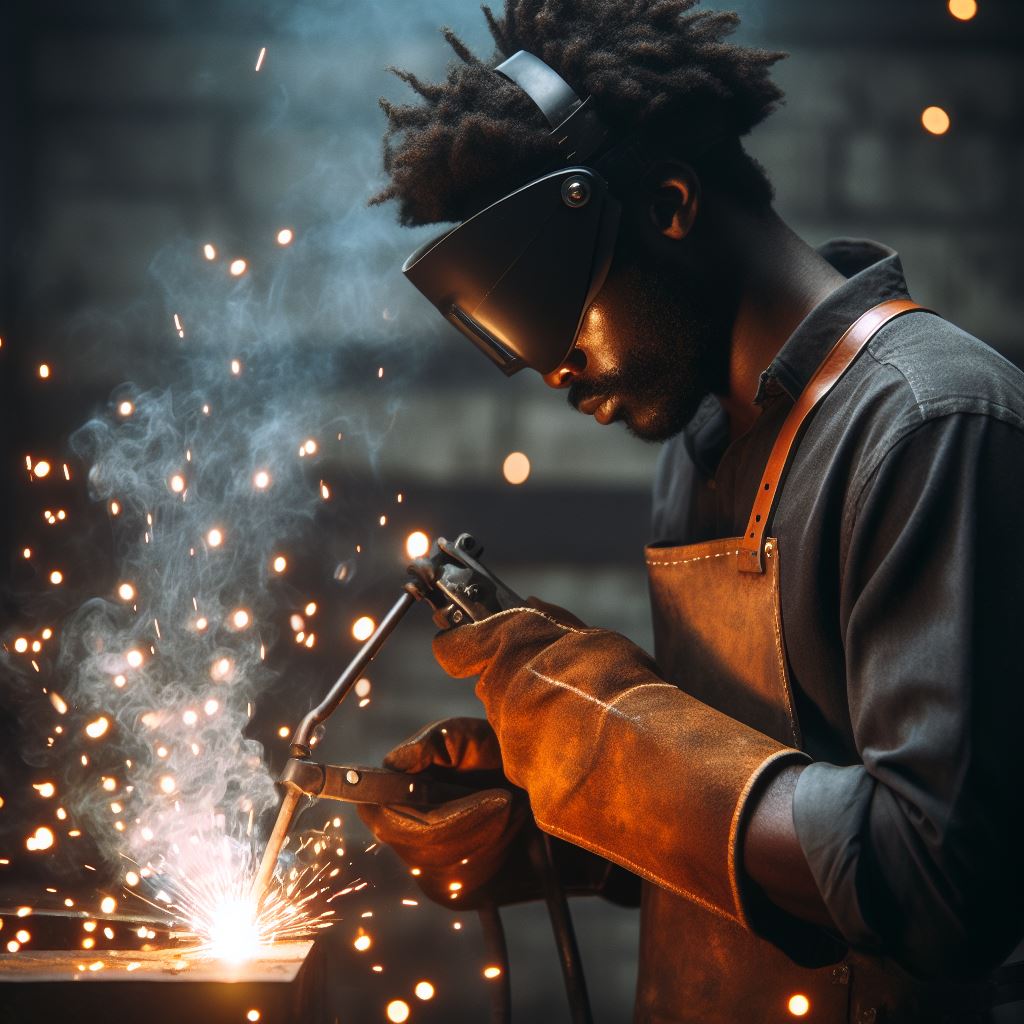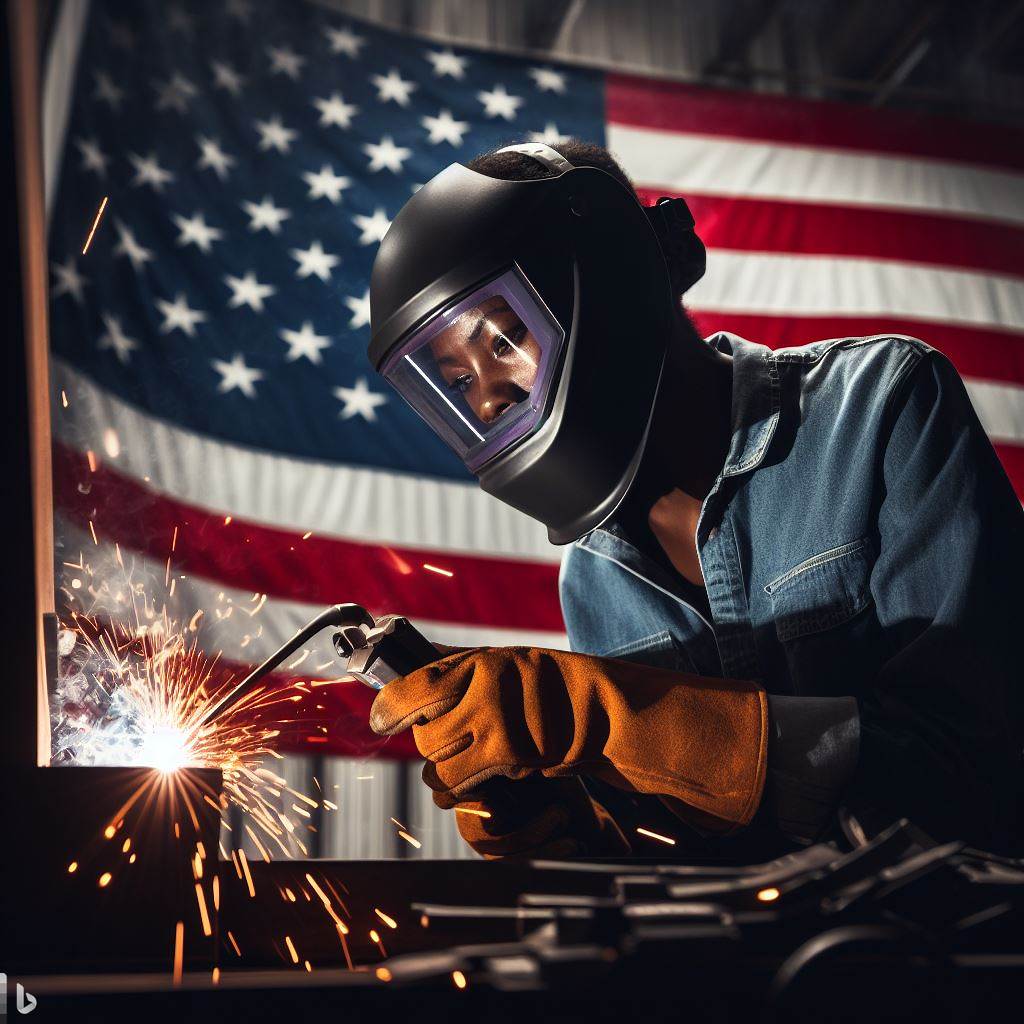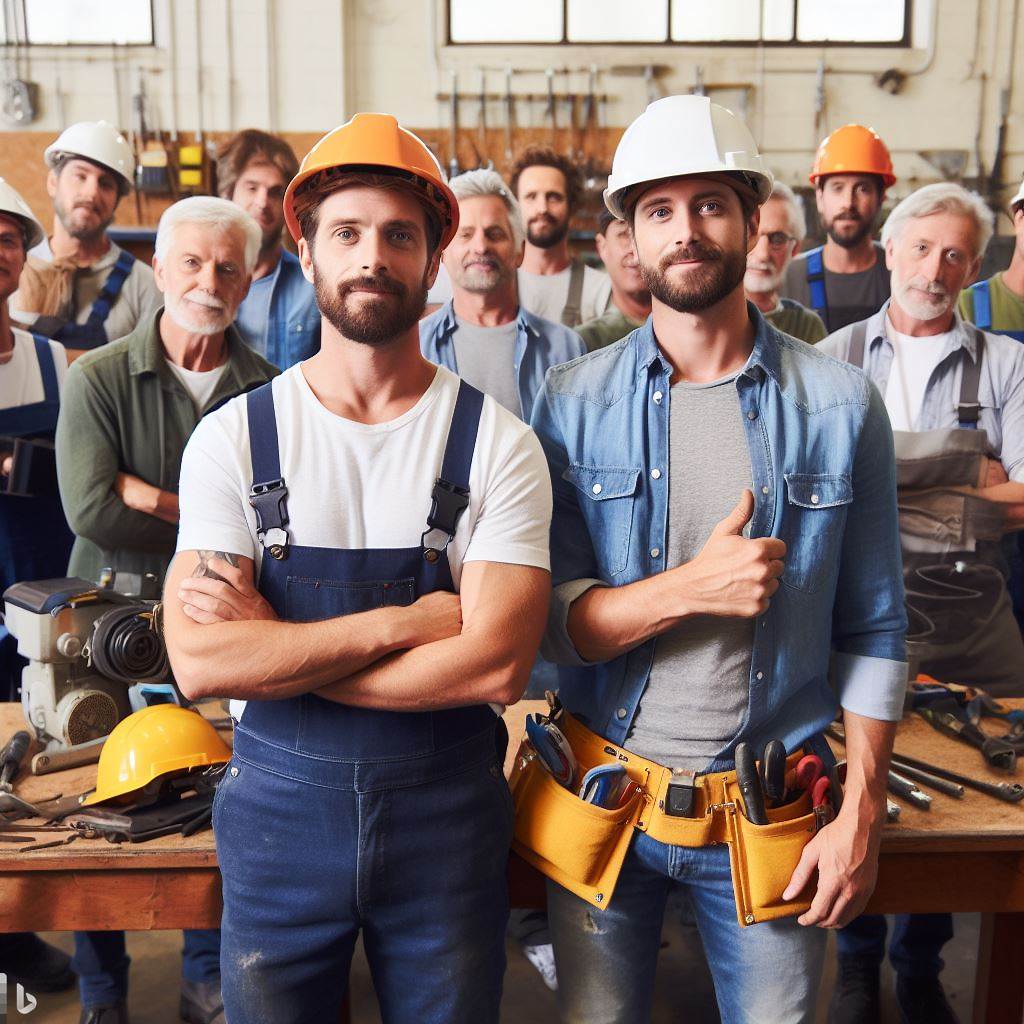Introduction
Welding is a skilled trade that involves joining metals by melting them together using extreme heat.
While it is a vital part of many industries, it also comes with its risks.
Therefore, it is essential for every US welder to be well-informed about and strictly follow safety protocols to ensure their well-being.
A. Importance of safety protocols for welders
Safety protocols are important for welders because they help prevent accidents and protect their health.
Welding involves working with high temperatures, sparks, and toxic fumes that can lead to severe injuries and long-term health issues.
By following safety protocols, welders can minimize the risks associated with their work.
B. Purpose of the blog post
The purpose of this blog post is to provide welders with a comprehensive understanding of the safety protocols they must know and follow.
It aims to equip them with the knowledge and information necessary to protect themselves and others in the workplace.
Throughout this section, we will discuss various safety protocols that every US welder should be familiar with.
These protocols range from personal protective equipment to welding in confined spaces, electrical safety, fire prevention, and proper ventilation.
By adhering to these protocols, welders can create a safer working environment for themselves and their colleagues.
In fact, safety protocols play a crucial role in the lives of US welders.
By understanding and following these protocols, welders can reduce the risk of accidents, ensure their well-being, and create a safer working environment.
Let us begin exploring these essential safety protocols in detail in the following sections.
General Safety Measures for Welders
Welding is a skilled trade that requires adherence to strict safety protocols.
Whether you are an experienced welder or just starting on your welding journey, understanding and following general safety measures is a fundamental aspect of the profession.
In this section, we will explore the importance of personal protective equipment (PPE) and proper ventilation/respiratory protection for welders.
A. Importance of personal protective equipment (PPE)
- Welding helmet: One of the most crucial pieces of PPE for welders is a welding helmet.
This essential gear protects the welder’s eyes and face from the intense light, sparks, and flying debris generated during welding. It must be worn at all times while working. - Welding gloves: Welding gloves are designed to provide protection against burns, electric shocks, and sparks produced during welding.
They should fit properly and offer heat resistance to ensure the safety and dexterity of the welder’s hands. - Protective clothing (e.g., welding jacket, pants): Welders must wear appropriate protective clothing to shield themselves from heat, sparks, and molten metal splatter.
A sturdy welding jacket and pants made of non-flammable and heat-resistant materials are essential for preventing burns and injuries.
B. Proper ventilation and respiratory protection
- Use of welding screens or curtains: Welding screens or curtains should be set up around the welding area to protect people nearby from harmful UV radiation, sparks, and welding fumes.
These barriers also help maintain a safe working environment. - Appropriate welding area setup: Proper ventilation is crucial in welding areas to disperse welding fumes, gases, and smoke effectively.
Adequate airflow minimizes the inhalation of toxic substances by the welder and others present in the vicinity. - Respiratory masks or respirators: Welding fumes can be hazardous if inhaled.
To protect against the potential health risks associated with welding fumes, welders should use respiratory masks or respirators specifically designed for welding applications.
These respiratory protection devices filter out harmful particles present in the air.
By strictly adhering to these general safety measures, welders can minimize the risk of accidents, injuries, and long-term health effects associated with the welding process.
Personal protective equipment (PPE), such as welding helmets, gloves, and protective clothing, is essential for shielding against potential hazards.
Additionally, setting up a well-ventilated welding area and using proper respiratory protection help safeguard welders from harmful fumes and gases.
Transform Your Career Today
Unlock a personalized career strategy that drives real results. Get tailored advice and a roadmap designed just for you.
Start NowRemember, safety should always be a top priority in the welding profession.
Electrical Safety
In the field of welding, electrical safety is of utmost importance.
Understanding the potential hazards associated with working with electricity and taking appropriate preventive measures are essential for the well-being of welders and everyone around them.
A. Understanding electrical hazards in welding
Welding involves the use of intense heat and electrical current to join metal pieces.
While the focus is often on the heat generated, the electrical aspect of welding must not be ignored.
Electric arcs and contact with live electrical parts can lead to severe injuries, including burns, electric shock, and even death for the welders.
Therefore, it is crucial for welders to understand the electrical hazards inherent in their work.
They should be aware of how electricity flows and the potential dangers associated with electrical contact.
B. Measures for preventing electrical accidents
1. Proper grounding and electrical insulation
One of the fundamental safety measures for welders is ensuring proper grounding and electrical insulation.
This involves connecting the welding machine and workpiece to a grounded metal conductor to create a safe path for electrical current.
It helps prevent the build-up of electricity in the welding machine and reduces the risk of electric shock.
2. Regular equipment maintenance
Regular maintenance of welding equipment is crucial to ensure the safe operation of electrical systems.
Welders should check for worn-out cables, damaged insulation, loose connections, and any other defects that might compromise the electrical safety.
Faulty equipment should be immediately repaired or replaced.
3. Safe handling of cords and plugs
Welders must always handle cords and plugs with care to avoid accidents.
They should never pull on the cord to disconnect it from the power source, as it may cause electrical arcing or damage.
Properly insulated gloves should be worn while handling cords to minimize the risk of electric shock.
In short, electrical safety is a critical aspect of welding.
Welders must have a clear understanding of the electrical hazards they may encounter and take appropriate preventive measures to minimize the risk of accidents and injuries.
Showcase Your Business Today
Reach thousands of readers actively exploring professional services. Publish your business profile and grow your audience now.
Publish NowProper grounding, regular equipment maintenance, and safe handling of cords and plugs are necessary steps in ensuring electrical safety in welding operations.
Read: Top 10 Cities for Welders in the USA: Where to Work?
Fire Safety
In the realm of welding, safety is paramount. Understanding fire hazards and adopting preventive measures is a must.
A. Awareness of Fire Hazards During Welding
- Welders should be acutely aware of the fire risks associated with their work, including sparks and molten metal.
- Fumes from certain metals can also pose fire hazards; proper ventilation is crucial.
B. Preventive Measures for Avoiding Fires
1. Clearing the Work Area
- Remove all flammable objects from the vicinity of the welding operation.
- Ensure a clean workspace to prevent sparks from igniting debris.
2. Use of Fire-Resistant Materials and Curtains
- Employ fire-resistant blankets or curtains to shield nearby combustible materials.
- These barriers help contain sparks and prevent fires from spreading.
3. Availability and Proper Use of Fire Extinguishers
- Fire extinguishers should be readily accessible in the welding area.
- Regularly inspect and maintain extinguishers to ensure they function correctly.
- Train all personnel on how to use fire extinguishers effectively.
By diligently following these fire safety protocols, welders can significantly reduce the risk of workplace fires.
Remember, safety is a shared responsibility. Every US welder must take these steps to heart to protect themselves and their colleagues from fire-related accidents.
Read: Comparing Salaries: Welder Income Trends Across US States

Welding Fume Safety
A. Health risks associated with welding fumes
Welding fumes pose significant health risks to welders due to the toxic substances released during the process.
Exposure to welding fumes can lead to various respiratory issues such as asthma, bronchitis, and metal fume fever.
The fumes also contain harmful carcinogens like chromium, nickel, and lead, which can increase the risk of cancer.
Other health concerns include eye and skin irritation, dizziness, nausea, and damage to the central nervous system.
B. Control measures to minimize exposure to fumes
To ensure the safety of welders, it is crucial to implement effective control measures in the workplace:
1. Adequate ventilation systems and exhaust hoods
Installing proper ventilation systems helps in maintaining a clean and safe working environment.
Local exhaust ventilation (LEV) systems should be utilized, capturing fumes at the source and preventing them from spreading.
Exhaust hoods with efficient air extraction capabilities should be strategically placed to minimize fume exposure.
2. Proper work positioning and angle
Welding in enclosed spaces or confined areas amplifies the concentration of fumes, increasing the health risks.
Proper work positioning and angle can help reduce fume exposure by ensuring better airflow and ventilation.
Welders should be trained to position themselves in a way that minimizes direct exposure to fumes.
3. Use of respiratory protection equipment
Respiratory protection equipment, such as respirators or masks, plays a critical role in safeguarding welders’ health.
The selection of appropriate respirators should be based on the specific hazards present in the welding environment.
Disposable respirators may provide sufficient protection for certain tasks, while more advanced respirators might be required for heavy exposure.
Regular maintenance and fit testing of respiratory equipment are essential to ensure effectiveness.
In general, welding fume safety is of utmost importance to protect welders from the health risks associated with toxic fumes.
Implementing control measures, including adequate ventilation systems, proper work positioning, and the use of respiratory protection equipment, is crucial.
By prioritizing safety protocols and minimizing exposure to welding fumes, welders can work in a healthier environment and reduce the risk of long-term health issues.
Read: Economic Impact: The Value of Construction Workers in the USA.
Mechanical Hazards
A. Identifying potential hazards from welding machinery
Welding machinery can pose significant mechanical hazards that welders need to be aware of.
These hazards can include:
- Exposed moving parts that can cause injuries if not properly guarded.
- Sharp edges and surfaces that can result in cuts and lacerations.
- Flying debris and sparks that can cause burns or eye injuries.
- Heavy equipment and machinery that can lead to crushing injuries.
- Noise levels that can result in hearing damage if protective measures are not taken.
B. Safety precautions for working with welding tools
To ensure the safety of welders when working with welding tools, several safety precautions must be followed:
1. Proper maintenance and inspection of equipment
Regular maintenance and inspection of welding equipment are essential to identify any potential hazards or malfunctions.
This includes checking for loose or damaged parts, ensuring proper grounding, and inspecting cables and connectors for wear and tear.
2. Safe storage and handling of welding materials
Welding materials such as electrodes, wires, and gases should be stored in designated areas away from heat sources and flammable substances.
They should also be handled with care to prevent accidental spills or exposure to heat, which can lead to fire or explosion.
3. Correct usage and guarding of machine parts
Welding machinery should only be operated by trained personnel who understand the correct usage and safety precautions.
Machine parts should be properly guarded to prevent accidental contact with moving components and to minimize the risk of injuries.
By following these safety protocols, welders can significantly reduce the risk of mechanical hazards and ensure a safe working environment.
Read: Training and Certifications: Upgrading Skills in US Construction
Emergency Preparedness
A. Importance of being prepared for emergencies
- Emergencies can happen at any time and being prepared can save lives.
- Welders work with hazardous materials and equipment, increasing the risk of accidents.
- Proper emergency preparedness ensures the safety of the welder and those around them.
- It minimizes the potential for injuries and reduces the severity of accidents.
Emergency preparedness is crucial for welders to effectively respond to accidents or injuries that may occur during their work.
Being prepared allows them to minimize the impact of emergencies and provide timely assistance to those in need.
It is not only a matter of personal safety, but also the safety of others working in the vicinity.
Welders face numerous potential hazards, including fire, explosions, electric shocks, and exposure to toxic substances.
Showcase Your Business Today
Reach thousands of readers actively exploring professional services. Publish your business profile and grow your audience now.
Publish NowThese risks highlight the importance of being prepared for emergency situations.
By having a well-defined plan and following established protocols, welders can significantly reduce the likelihood of accidents and injuries.
B. Steps to be followed in case of accidents or injuries
1. Quick assessment of the situation
- As soon as an accident occurs, assess the situation to determine the severity.
- If there is an immediate danger, prioritize the safety of yourself and others.
- Identify the nature of the accident, such as fire, explosion, or injury.
When an accident or injury occurs, the first step is to quickly assess the situation.
This helps determine the severity of the incident and the appropriate response.
Immediate dangers should be addressed first, ensuring the safety of everyone involved.
Identifying the nature of the accident allows responders to take the necessary precautions.
2. Activation of appropriate emergency response
- If the situation requires immediate assistance, activate the emergency response system.
- Inform the relevant personnel, such as supervisors, safety officers, or security personnel.
- Follow the established protocols and procedures for reporting emergencies.
Activating the appropriate emergency response system is the next crucial step.
Welders should inform their supervisors, safety officers, or security personnel about the incident.
These individuals can coordinate with the necessary emergency services, such as the fire department or medical professionals.
Adhering to established protocols ensures a swift and efficient response.
3. Providing immediate first aid and contacting medical professionals
- If injuries occur, provide immediate first aid to the affected individual.
- Apply basic first aid techniques, such as stopping bleeding or performing CPR if necessary.
- Contact medical professionals, such as paramedics or doctors, for further assistance.
- Ensure that the injured person receives appropriate medical attention as soon as possible.
Injuries may require immediate first aid before professional medical help arrives.
Welders should be trained in basic first aid techniques to provide initial assistance to the injured person.
This can include stopping bleeding, stabilizing fractures, or performing cardiopulmonary resuscitation (CPR) if required.
Promptly contacting medical professionals ensures that the injured individual receives appropriate care as soon as possible.
In essence, emergency preparedness is vital for welders to effectively respond to accidents or injuries.
By being prepared and following the necessary steps, the impact of emergencies can be minimized, and timely assistance can be provided.
Prioritizing safety and taking prompt action can save lives and prevent further harm.
Welders must constantly stay aware of potential risks and actively participate in emergency preparedness training to ensure the well-being of themselves and those around them.
Conclusion
A. Recap of the main safety protocols every US welder must know and follow
To ensure their safety and the safety of their colleagues, US welders must be knowledgeable about and adhere to important safety protocols.
This includes wearing appropriate protective gear such as welding helmets, goggles, gloves, and fire-resistant clothing.
They must also be trained in the proper handling and storage of welding equipment, including tanks and cylinders.
Furthermore, welders must be aware of potential hazards in their work environment, such as toxic fumes and gases, and take necessary precautions.
This may involve working in well-ventilated areas or using exhaust systems to minimize exposure.
They should also regularly inspect their tools and equipment for any defects or damages that could pose safety risks.
Additionally, it is crucial for welders to follow safe work practices, such as maintaining a clean work area and proper housekeeping.
This helps prevent potential accidents caused by slips, trips, or falls. They should also be trained in emergency procedures and have access to first aid kits in case of injuries.
B. The significance of adhering to safety measures for the well-being of the welder and those around them
Adhering to safety measures is of utmost importance in the welding profession.
By following proper protocols, welders can reduce the risk of serious injuries, such as burns, eye damage, and respiratory issues.
Moreover, safety precautions protect not only the welder but also their colleagues and the overall workplace environment.
Failure to follow safety protocols can lead to severe accidents, costly damages, and potential legal consequences.
Therefore, it is essential for every US welder to prioritize safety and make it a fundamental aspect of their work.
By doing so, they create a safer work environment, contribute to their own well-being, and ensure the well-being of those around them.
[E-Books for Sale]
The Big Book of 500 High-Paying Jobs in America: Unlock Your Earning Potential
$19.99 • 500 High-Paying Jobs • 330 pages
Explore 500 high-paying jobs in America and learn how to boost your career, earn more, and achieve success!
See All 500 High-Paying Jobs of this E-Book
1001 Professions Without a Degree: High-Paying American Jobs You Can Start Now
$19.99 • 1001 Professions Without a Degree • 174 pages
Discover 1001 high-paying jobs without a degree! Unlock career tips, skills, and success strategies for just $19.99!




